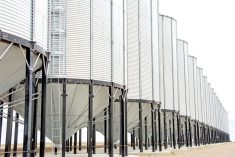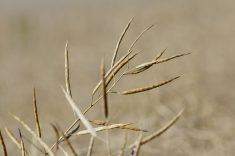CNS Canada –– Early seeding operations are already underway in parts of Western Canada, and the general sentiment is that farmers are planting more peas and lentils at the expense of most everything else.
Statistics Canada releases its first survey-based acreage estimates of the year on Thursday.
“I think we’ll see a surge in pulse acres,” said Jerry Klassen, manager of the Canadian office for Swiss-based GAP SA Grains and Products in Winnipeg, expressing the general sentiment across the sector.
“We’ve never seen contracted prices for pulses as high as this year,” added analyst Wayne Palmer of Agri-Trend Marketing.
Read Also

U.S. grains: Soybean ease on harvest pressure, competition from Brazil
U.S. soybean futures eased on Monday on active harvesting across the Midwest farm belt and brisk early planting as well as exports in rival supplier Brazil, and as top importer China continues to shun U.S. supplies.
Lentil acres are forecast at 4.4 million to as much as 5.5 million acres, which would be a new record even at the low end. Peas are forecast at four million to five million. Last year, Canada saw 3.95 million acres of lentils and 3.68 million acres of peas.
Beyond the pulse crops, attention will be largely focused on wheat and canola.
“The general trend seems to be that farmers are disgruntled with wheat, and the wheat acres will be down a bit,” said Ken Ball of PI Financial in Winnipeg.
U.S. spring wheat acres are already expected to be down considerably on the year, according to the U.S. Department of Agriculture’s prospective plantings report, and the question now is whether or not that trend will continue in Canada, said Klassen.
All-wheat area, which includes durum, other spring wheat and winter wheat, is expected to be steady to down by more than two million acres from the 24.111 million acres seeded the previous year. Of that total, durum estimates range from about 5.4 million to six million.
While it likely won’t show up until subsequent reports, Jon Driedger of FarmLink Marketing Solutions said the breakdown of the varieties of wheat seeded will be interesting to see.
He expected losses in hard red spring wheat acres will account for most of the reductions in wheat area, with other classes — including prairie spring and soft white wheat — likely up on the year.
For canola, “the market needs to encourage acres, and if we come out similar or slightly lower (on acres) it will be friendly for the market,” said Klassen.
After the 20.095 million acres grown in 2015, expectations for the upcoming crop range from 19.7 million to 21 million acres, with most estimates leaning toward a slight increase.
— Phil Franz-Warkentin writes for Commodity News Service Canada, a Winnipeg company specializing in grain and commodity market reporting. Follow CNS Canada on Twitter at @CNSCanada.
Table: Pre-report trade guesses ahead of Statistics Canada’s April 21 intended acreage report, in millions of acres.
| Pre-report | StatsCan, | |
| estimates | 2015-16 | |
| Canola | 19.700 – 21.300 | 20.095 |
| All wheat* | 21.500 – 24.200 | 24.111 |
| Durum | 5.400 – 6.000 | 5.820 |
| Barley | 6.200 – 7.000 | 6.527 |
| Flaxseed | 1.500 – 1.800 | 1.640 |
| Oats | 2.800 – 3.200 | 3.337 |
| Peas | 4.000 – 5.000 | 3.680 |
| Lentils | 4.400 – 5.500 | 3.950 |
* – Includes winter wheat remaining














